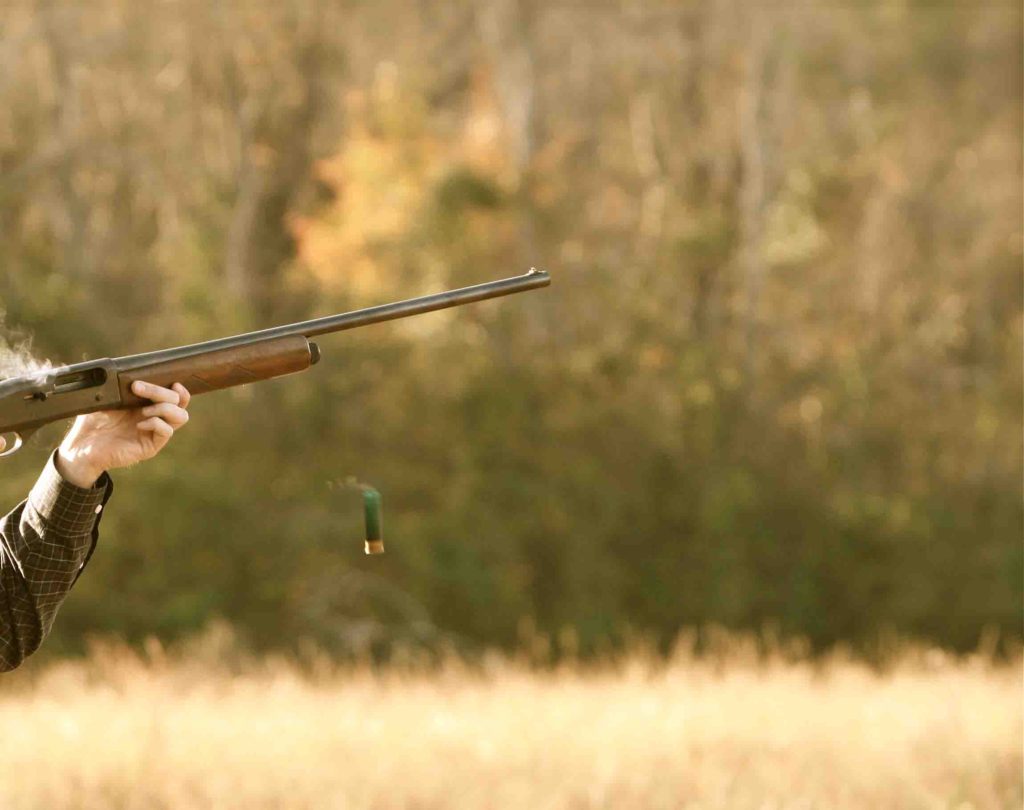You and your shotgun are supposed to be one. Your hands form the vital link between flesh and bone, and steel and wood that makes the gun an extension of your body.
Your hands insure that your gun shoots where you look, that it doesn’t beat you up too badly, and that it doesn’t tangle in your clothes as you bring it into action. You’ve got to hand it to them: along with your eyes, hands are your most important shooting asset. Here’s how they (should) hold the gun, and what they do with it once they’ve got a grip.
When you’re shopping for a gun, be mindful of its gripping surfaces. Shooters with smaller hands may find that a pistol grip’s curve is too wide to allow them to comfortably reach the trigger or the safety, especially if that safety is a push button at the front of the trigger guard. The growing number of women’s guns on the market are stocked with smaller hands and shorter fingers in mind, and you may find them worth a look if you struggle with grips made for larger hands.
Pay attention to the thickness of the stock’s wrist (the part you wrap your fingers around) and to the bulk of the forend to be sure your front-hand grip is comfortable. For what it’s worth, I personally think bulkier grips feel awkward, but are easy to shoot well with, as they keep me from over-controlling the gun.
The trigger lifts the gun to your face and tucks it into the shoulder, then it pulls the trigger. It has almost no role in pointing or steering the gun.
The easiest way to get the right hold on a shotgun with your trigger hand is the same method I was taught for gripping a tennis racket years ago: shake hands with it. That handshake grip puts your palm along the side of the stock wrist, not up over top where it binds when you lift the gun.
Your thumb goes around the gun’s wrist, not on top where it can block your view of the target and weaken your hold. And, like a good handshake, your grip should be neither mushy nor bonecrushing, but firm. Your hands will absorb a great deal of the gun’s recoil if you hold onto it. A deathgrip with either hand is too much, though. It only adds tension and destroys your flow to the bird.
Your front hand points and moves the gun. When you take hold of the forend, rather than cup it squarely in your palm, let it lie diagonally across your hand. Such a hold puts the gun in line with your extended index finger, letting you point the gun naturally. Your front hand, like your trigger hand, should hold the gun just tightly enough to make you aware of the checkering.
Some shooters like to extend that index finger along the forend. I do, and it helps me think about pointing my finger, not aiming the gun. Some target shooters extend two fingers which feels awkward to me but works for them. Other shooters extend no finger at all. Do what you like there.
However, the grip to avoid is to hold the gun the way some people hold rifles, with all the fingers curled into the palm and the gun rested on the web between thumb and index finger. It’s a hold better suited to aiming than to pointing, and it does nothing to help take up recoil.
Where you hold the gun along the forearm is up to you. You shouldn’t have a locked elbow, but otherwise, take a grip as long or as short as you please. A grip closer to the receiver lets you swing the gun faster, a longer hold gives you more control and helps you point more naturally.
A long grip makes mounting a gun with a stock that’s too short more comfortable. Conversely, choking up to take a short grip makes it easier to mount a gun that’s too long.
Incidentally, a classic side by side with a tiny “splinter” forend too tiny to grip is meant to be held by the barrels. A leather-covered handguard that slips over the barrels is a traditional accessory for such guns, and it gives you a comfortable grip when the barrels heat up.
Your hands have different tasks, but they work together on the gun mount. Your front hand’s job is to point the barrels at the bird and to push it out and away from you to clear your body and clothing.
As long as your eyes are focused on the target, the front hand knows where to go.
At the same time, your trigger hand raises the gun to your face, tucks it under the cheekbone, then pulls it back slightly to set it in your shoulder pocket. Your trigger hand has to consistently put the gun in the right place in relation to your eye and into your shoulder pocket so that the gun shoots where you look (it also hurts less than if you set it on your shoulder).
Practice
When both hands are working—well—hand-in-hand, the muzzle tracks to the target as the stock comes up to your face and shoulder, and you can shoot the instant the butt meets your shoulder pocket.
Take five or 10 minutes every evening to practice your gunmounts at home with a shotgun you have double- and triple-checked to be unloaded. For even better practice, slip a Mini MagLite into the barrel so you can see where the gun is pointing. A few minutes of indoor practice every day will give you the upper hand when it’s time to shoot for real.

